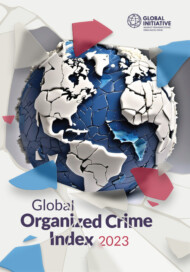Posted on 30 Jan 2020
This edition of the Risk Bulletin of Illicit Economies in Eastern and Southern Africa covers a diverse range of criminal markets, from ivory trafficking to counterfeit medicines. It focuses in particular on national-level responses to organized crime, and how policy and regulation across all branches of government can shape criminal dynamics. In Zimbabwe, we draw on fieldwork conducted by the GI-TOC to contextualize a recent and troubling upsurge in violence related to illegal gold mining. A recent policy initiative on behalf of Zimbabwe’s state gold buyer – to acquire gold with ‘no questions asked’ as to the legality of its production – has gone hand in hand with high-level corruption. Hundreds have died in the violence between machete-armed mining gangs, and between gangs and police.
Our reporting on new data on the number of South African citizens incarcerated overseas raises questions as to whether South Africa’s foreign ministry is monitoring the situation effectively, supporting victims of exploitation and making use of this information to investigate transnational criminal networks operating in South Africa.
We also look at regulation of Uganda’s pharmaceuticals market and the disturbing prevalence of counterfeit medicines. Although that country’s National Drug Authority has, in recent months, led an offensive against counterfeits, our research questions how far these efforts are able to investigate and challenge supply networks of counterfeit medicines into the country.
This month, we report on a success story in fighting organized crime in Malawi. Whereas, for some years, Malawi had a reputation for being a regional ivory trafficking hub, the recent disruption of a major ivory trafficking network allegedly led by Yunhua Lin (one of the country’s most wanted criminals) is a testament to how Malawian authorities have improved their capacity to investigate and prosecute wildlife crimes in recent years.
Sign up to read every month
Photo: UN Photo/Mark Garten – Arua, Uganda




